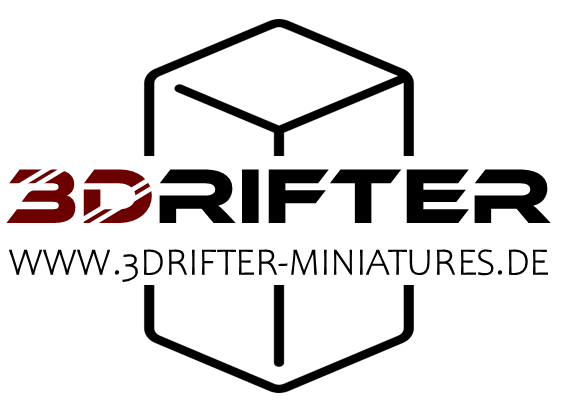FAQ
Collapsible content
How are the figures delivered?
The figures are always delivered with support structures and unpainted.
Why are the figures shipped with support structures?
The support structures are production-related. You can easily remove them with fine pliers. The support structures protect sensitive parts of the miniatures during transport. They allow us to process and package the figures more quickly and ultimately offer them at a lower price.
How can I remove the supports?
What colors and what equipment do I need to paint the miniatures?
For painting the miniatures, we recommend using matte acrylic paints and high-quality model paints (1)-(4). Alternatively, you can paint the miniatures with a more affordable option, "hardware store paints" (5)-(6). The advantage of model paints is that they provide better coverage and allow you to use less paint on the models. With hardware store paints, there is a risk that the thicker paint layer will cover fine details on the miniatures. The consistency of model paints enables you to work much more precisely. Personally, we recommend using the higher-quality model paints despite the higher initial cost.
To create great effects on the miniatures and highlight details, we advise you to explore topics like shadowing and highlighting through YouTube tutorials. For standard model paints (1)-(2), separate colors are used to create shadows and highlights, and you will need to paint the miniature multiple times to achieve these effects: first with the base color, then add the shadows, and finally the highlights. You will need at least three different colors for this process.
This process can be simplified by using speed paint colors (3)-(4). With a single coat, you can paint the base color, shadows, and highlights simultaneously, saving you some time.
(1) Starter Set TheArmyPainter (small) *
(2) Starter Set The ArmyPainter (large) *
(3) Speedpaint TheArmyPainter (small) *
(4) Speedpaint TheArmyPainter (large) *
(5) Cheaper Alternative (small) *
(6) Cheaper Alternative (large) *
Primer Spray
We recommend priming each miniature before you start painting. A spray primer (7) can be quickly applied to the miniatures and provides good adhesion for the paints and a smooth surface.
(7) Primer Spray (white) *
Brushes
The brush size you choose depends on the size of the miniature you are painting. Smaller miniatures (scale 1/32 and smaller) can be painted with the following brush set (8). The brushes are affordable, and the set offers various sizes to try out. The included flat brush can be used for dry brushing and applying highlights.
(8) Fine Brush Set *
Wet Palette:
The wet palette (9) is a palette you can use for mixing and preparing paints. It is sealable and keeps the paint inside from drying out. You can use it not only for mixing but also for proper dosing on the brush. Since the paint stays usable longer, you will use less paint overall. A wet palette is particularly handy when you want to mix colors and use them multiple times. It is very difficult to achieve the exact same shade when remixing.
(9) Wet Palette *
Alternative Airbrush System:
Alternatively, especially for larger models or terrain pieces, an airbrush system can be used. With an airbrush system, you can create great color transitions. However, compared to traditional brush painting, you should expect higher costs. From personal experience, we recommend the airbrush systems from Harder & Steenbeck. For this, you will need an airbrush gun (11). The airbrush gun is then connected via a hose (12) to a compressor (13), which provides the compressed air. The suggested compressor also has a pressure tank, so it doesn’t need to run continuously. Special airbrush paints (14) are required for an airbrush system, which are used to fill the gun. Finally, a cleaning container (15) is recommended to dispose of excess paint during color changes and to store the gun when not in use. Lastly, I recommend a cleaning solution (16) to clean the gun between color changes and after use.
(11) Airbrush Gun *
(13) Compressed Air Compressor *
(14) Airbrush Paints *
(15) Cleaning Container *
(16) Cleaning Solution *
Miscellaneous:
When assembling larger models, small gaps may occur. This is completely normal and unfortunately cannot be avoided due to production reasons. For this, there is a special putty in model making called "Green Stuff" (17). The product we recommend consists of two components. You take this putty in equal parts (blue color/yellow color) and knead it until both parts are combined (the putty will now turn green). In this composition, you can then fill the putty into the gaps that have formed. I recommend warming the putty a bit beforehand, for example, by placing it gently in the sun. This will soften the material and make it easier to stuff into the gaps. Once the material has cured, it can be carefully sanded with sandpaper to smooth out the transitions. Afterwards, the putty is primed together with the model and can then be painted.
(17) Green Stuff*
To glue multi-part models together, we recommend super glue (18).
(18) Super Glue*
* Affiliate Links: As an Amazon Associate, I earn from qualifying purchases
